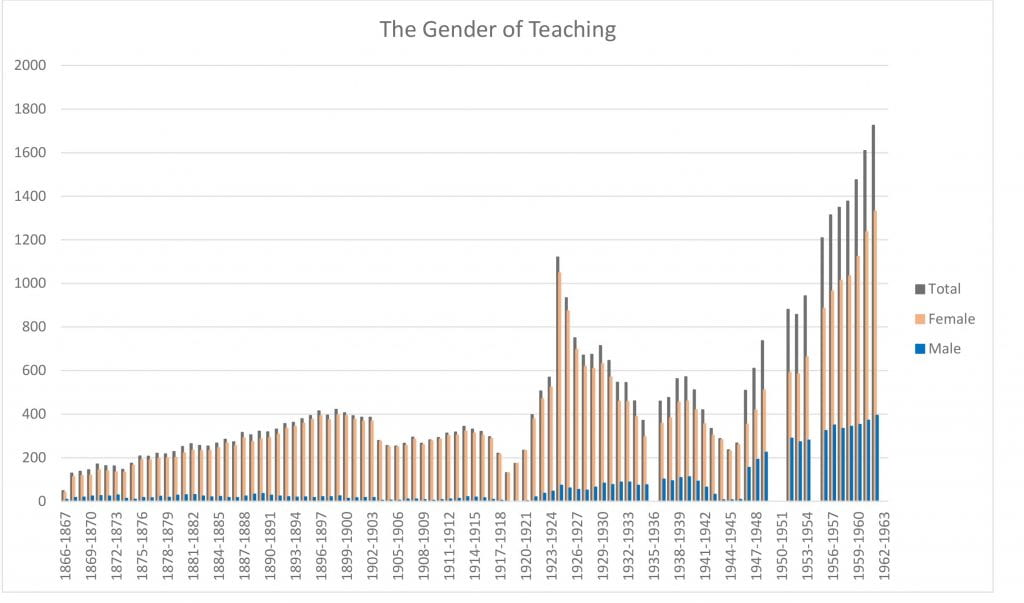One question we often get in the archives is “When did Towson start letting men attend?” and the answer is “Always.”
Many people think that in our early days, we were a women-only institution, but that’s isn’t true. In 1866, when we had 48 students, 8 of them were male.
The reality is that teaching after the Civil War was very much a female-dominated field, and this was because while women needed jobs, the respectable, well-paying jobs that women could hold were few and far-between. Teaching offered a salary, and a pension, but it didn’t pay so well that many men thought about it as a career choice.
Around the first World War, Principal Henry S. West sent a survey to all the Maryland State Normal School graduates asking them about their work experiences as teachers. His goal was to raise the salaries of Maryland teachers, and thereby attract more students to MSNS. Through his efforts, the Maryland State Legislature created a law that guaranteed teachers a starting minimum salary, making teaching more attractive to a wider variety of people, including those who would have chosen higher paying civil service jobs.

we were a school for teachers.
